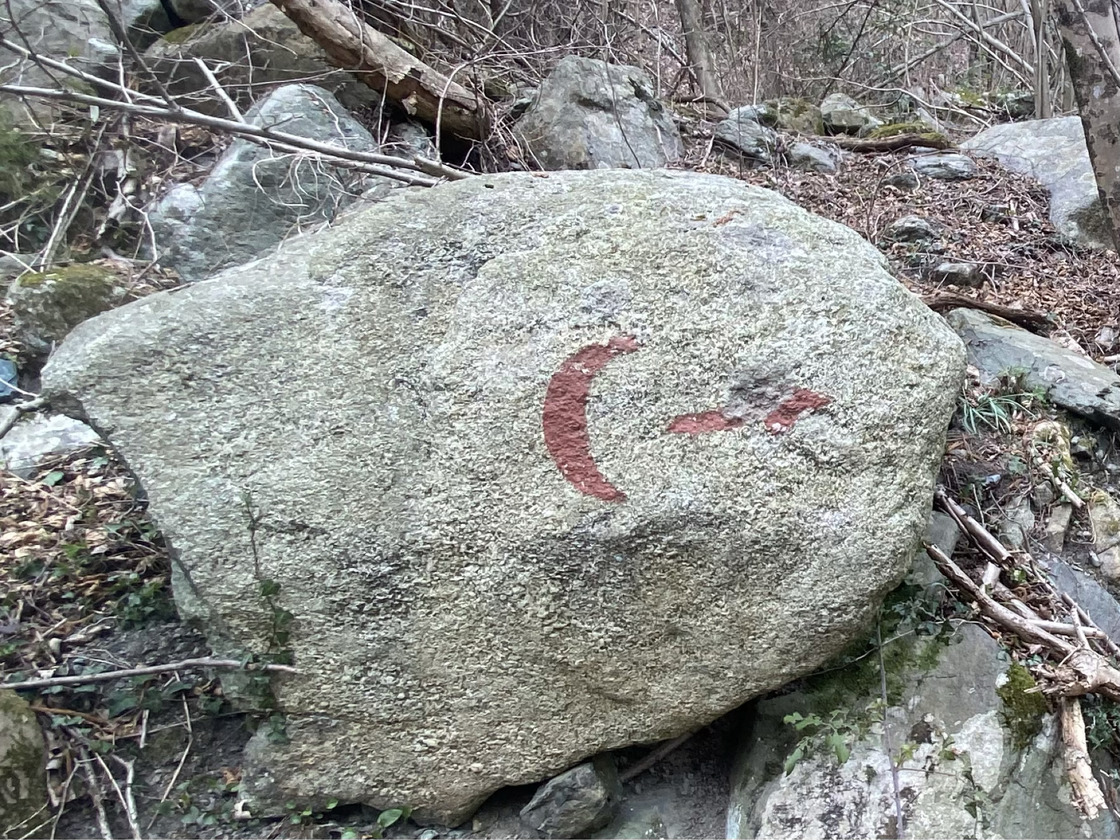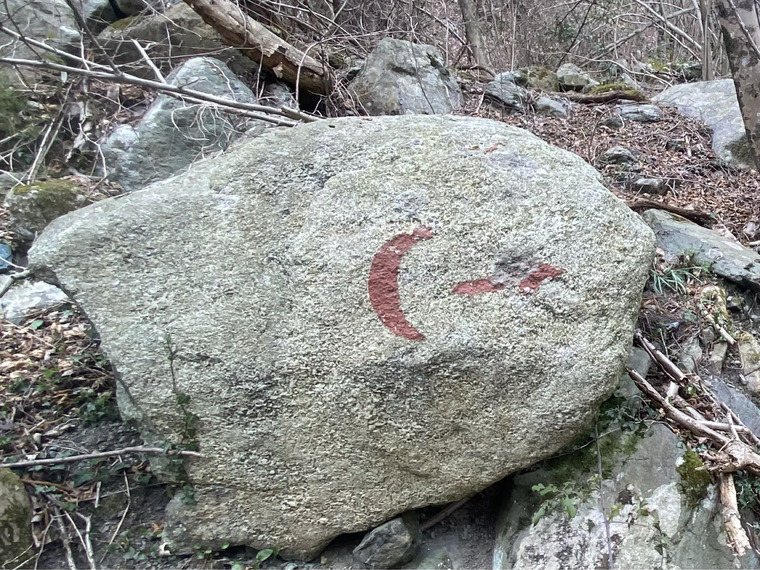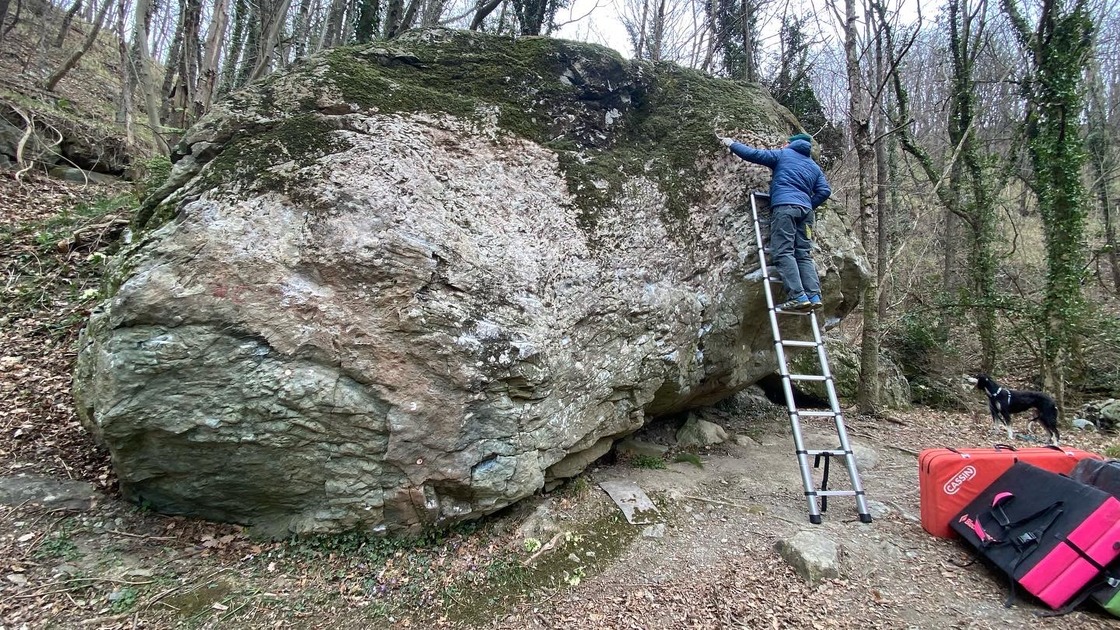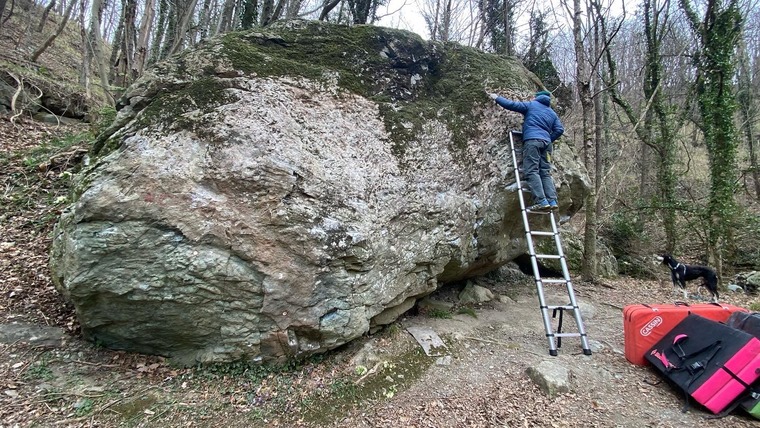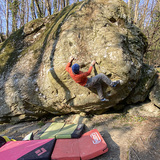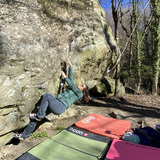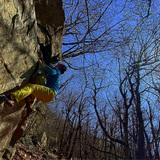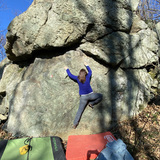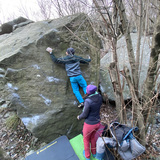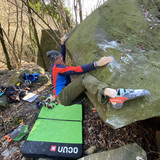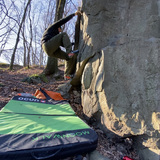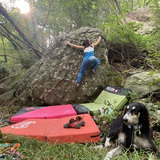🇮🇹
Siamo in Liguria, nell’entroterra di Genova, poco dopo le case del comune di Cravasco, zona storica di arrampicata sia per le due falesie La Piccola e La Grande sia per i Boulder
I Boulder si possono dividere in due zone.
👉La prima e la principale i “Massi della Luna”, nella fitta foresta 🌳 di latifoglie in una valletta dove scorre un piccolo torrente, più di una ventina con difficoltà dal 3 al 7 grado, a volte da pulire da un sottile patina di muschio.
N.B.: nelle Topos ciascun masso è stato nominato NOME+(MDL-lettera) dove MDL sta per Massi della Luna e la lettera A, B, C, D ecc è segnata sul masso.
👉La seconda zona è di massi sparsi, non vicini tra di loro come Killer, Masso 6, Masso 10, Cecchino, comunque facilmente raggiungibili in auto.
ℹ️ Abbiamo cercato di fare un po’ di ordine e aggiornare l’area riprendendo il più’ fedelmente possibile le linee dei massi dalla vecchia guida realizzata da Paolo Canepa con la colaborazione di Andrea Costaguta che trovate su Levante Bloc (http://www.proreccoarrampicata.it/levantebloc/aree/cravasco/cravasco.html). Sono state rifatte tutte le foto dei massi e inseriti dei nuovi Boulder.
😬Atterraggio
Solitamente su terreno boschivo pianeggiante (crash pad comunque obbligatori!).
🪨Tipo di Roccia
Gneis simile ad arenaria
☀️Clima
E’ possibile arrampicare tutto l’anno. In inverno a volte presenza di neve.
I Massi della Luna e il Cecchino sono in ombra scalabili tutto l’anno mentre gli altri massi come Killer, Alpestre, 6 e 10 essendo esposti al sole meglio evitare nelle giornate calde estive.
👉 Raccomandato il rispetto dell’ambiente e della tranquillità degli abitanti del paese
--------
🇬🇧
We are in Liguria, in the hinterland of Genoa, shortly after the houses of the municipality of Cravasco, a historic climbing area for both the La Piccola and La Grande cliffs and for the Boulder
The boulders can be divided into two areas.
👉The first and main the "Boulders of the Moon", in the dense forest 🌳 of broad-leaved trees in a valley where a small stream flows, more than twenty with difficulty from 3 to 7 degrees, sometimes to be cleaned from a thin patina of moss .
N.B .: in the Topos each boulder has been named NAME + (MDL-letter) where MDL stands for Massi della Luna and the letter A, B, C, D etc. is marked on the boulder.
👉The second area consists of scattered boulders, not close to each other like Killer, Masso 6, Masso 10, Cecchino, however easily reachable by car.
ℹ️ I️ We tried to make some order and update the area by taking up as faithfully as possible the lines of the boulders from the old guide made by Paolo Canepa with the collaboration of Andrea Costaguta that you can find on Levante Bloc (http://www.proreccoarrampicata.it/levantebloc/aree/cravasco/crava All the photos of the boulders have been redone and the new Boulders have been inserted.
😬Landing
Usually on flat wooded terrain (crash pads still required!).
🪨Type of Rock
Sandstone-like gneiss
☀️Climate
It is possible to climb all year round. In winter there is sometimes snow.
The Boulders of the Moon and the Sniper are in the shade that can be scaled all year round, while the other boulders such as Killer, Alpestre, 6 and 10 are exposed to the sun and are best avoided on hot summer days.
👉Respect for the environment and tranquility of the inhabitants of the country is recommended
